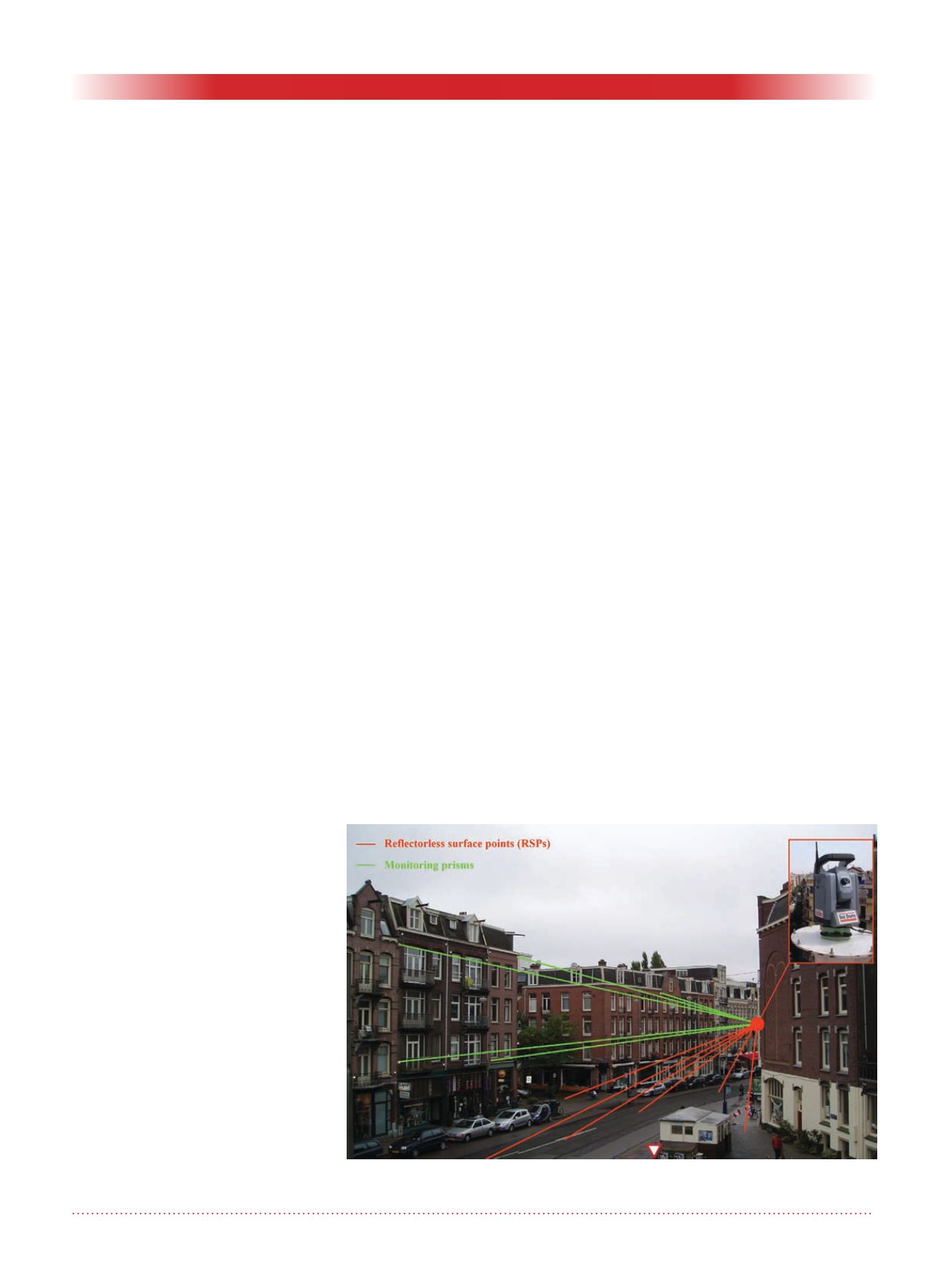
30
Geotechnical News • March 2012
GEOTECHNICAL INSTRUMENTATION NEWS
Remote monitoring of surface deformation with Robotic Total
Stations using reflectorless measurements (RRTS)
Damien Tamagnan and Martin Beth
[Please refer to Tamagnan and Beth,
GIN Sept 2011, pp 21-24 for more
details. Ed.]
Principle of operation
A remote monitoring system able to
measure surface deformation 24 hours
a day is made up of:
• A robotic total station (RTS)
equipped with a reflectorless dis-
tance meter.
• A support platform, electronics
box, and 3G or Wi-Fi system.
• A data logger which can be oper-
ated remotely with specific soft-
ware able to drive
the total station
to the predetermined locations of
the monitored points.
• Computation software, which can
be more or less advanced, for
calculating the movements of the
points of interest.
During each monitoring cycle the
instrument sights at (see Figure 1):
• The reflectorless surface points
(RSPs) on a flat, homogeneous and
planar surface for which vertical
deformation is to be monitored.
RSPs are not physically marked
and are not physical objects; they
are just a location on the ground at
which the RTS is sighting.
• The stable reference prisms, which
permit computation of the correct
position and orientation of the
RTS.
• If necessary, the same total station
and software can sight monitoring
prisms installed on structures to be
monitored in 3D, as for a standard
RTS.
On completion of the cycle, the raw
and/or calculated data are sent to the
database via Wi-Fi or 3G. The system
can also trigger alarms sent by SMS or
e-mail if predetermined thresholds are
exceeded.
Main fields of application
Monitoring of road surfaces during
underground work.
Accuracy
The accuracy of the RRTS method has
been confirmed by comparing precise
levelling with RSP movements. Exter-
nal controls confirmed a consistency
better than ±1 mm.
Main advantages
• High frequency of readings pos-
sible (down to one reading per
hour for example)
• Uninterrupted traffic, neither for
installation nor for taking readings
• Very safe, no surveyors on the road
• Very cost effective for high fre-
quency of readings
Main limitations
The range of the distance meter
is limited, and so is the angle of
incidence of the laser beam on the
measured surface. Weather conditions
also downgrade the emitted distance
meter signal.
Case histories
The RRTS method has been well
proven in practice in many work sites
since 2005.
• In Amsterdam (Netherlands) over
82 RTS
are used to measure more
than 5000 RSPs above the tunnel
boring machine during the con-
struction of the metro line.
• In Toulon (France) a network of
1830 RSPs has been measured
over roads and pavements from 36
RTSs during four years.
• In Barcelona (Spain) long-term
monitoring of the high speed
railways tunnel and of Metro Line
9 has been set up to monitor settle-
ment on roads, sometimes with
heavy traffic.
Damien Tamagnan
SolData Group, Head of survey
department, Travesia Industrial,
149 -3ª C 08907 Hospitalet de
Llobregat Barcelona (Spain).
T: +(34) 93 263 29 69.
E:
Figure 1. A Reflectorless Robotic Total Station (RRTS) measuring RSPs and
prisms.


